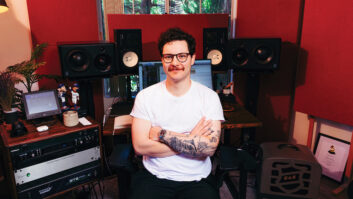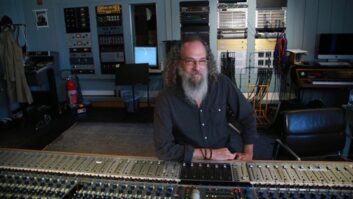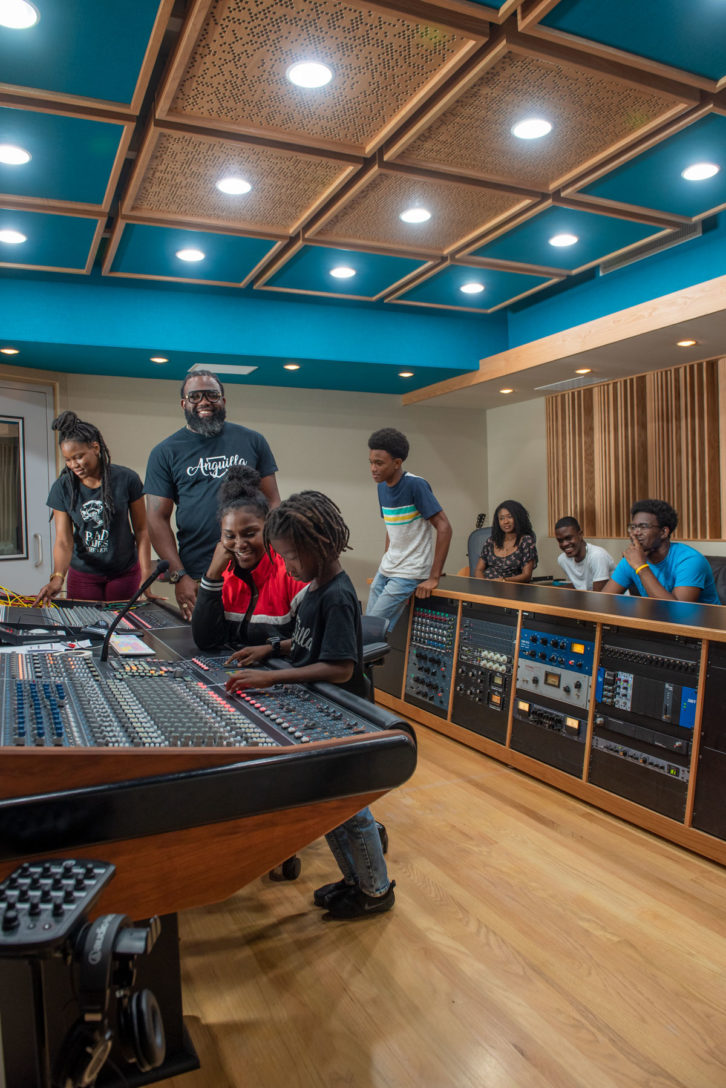
It all starts with music. This world of recording, technology, studio design, microphones, business, promotion, monitors, circuit design, digital audio workstations, education, plug-ins, concert P.A. systems, audio networking, immersive sound, 24-bits and 192 kHz, emulations, samples and beats—it all starts with some guy on guitar, a woman classically trained on piano, an elder master of the oud or some kid on steel drums.
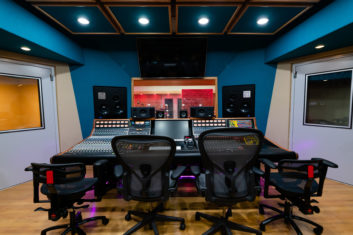
It all starts with music. And on the island nation of Anguilla, east of Puerto Rico and a short boat ride north of St. Martin, there is some damn fine music, and there has been for centuries.
But until recently, it’s mostly been about playing music and performing live. Anguilla is a small island, roughly 35 square miles with a population of just over 19,000 with roughly 40 to 50 percent under the age of 18. Tourism is the primary industry, and music certainly helps to feed that part of the economy. Besides international banking and local services, there’s not much else. Opportunities for youth are limited.
Anguilla is not a poor country by any means, and the eight-year story of the birth of the Anguilla Music Academy and its associated AMA Recording Center, which opened officially in its new space in November 2019, is not a tale of some capitalists coming in and offering up a studio palace for the poor, starving locals. This is a story about youth and talent, and exposing those kids—and their parents—to the larger opportunities out in the world, with music as the gateway.
“I can remember back to the first week of our first summer camp, about five years ago,” says Darius James, founder of the nonprofit Anguilla Music Academy and by all accounts the visionary who brought all the pieces together. “This is an island culture, with a rich musical tradition. The students came in the first day and they all had songs ready. What I saw from those kids was that this would be more than just musical development; it was about developing them as a person.”
A Drummer With a Vision
Darius James is a humble man with a magnetic and infectious personality, driven by a passion that demands total commitment to that which he believes in. He speaks openly of God and Spirit, of Vision and Energy, of Family and the Divine. He also speaks with passion of his first visit to a recording studio, and of imagining the musical possibilities.
Born and raised in a musical family in Dominica, James can still recall as a youngster performing every Saturday what they dubbed Radio Under the Tree, where he and his brothers would set up under a tree and play live, fielding requests from neighbors who called from a few houses away. From there, he worked as a drummer/singer on a cruise ship for two-and-a-half years, then went to Anguilla for what he thought would be a short vacation. He’s never left.
Long story short, a band he was in at the time found the money to go to New Jersey to record. “I realized that in 90 percent of the pictures from that trip I was standing and looking at the mixing board as opposed to checking the drums,” he recalls. “So I was like, wow, this sounds like something I’m interested in. At that time, I had a brother who lived in New York. We talked about it and he told me, if you can get me $2000, I can get you a studio set up. He bought me an iMac computer for 800 bucks. He bought me an interface, a MIDI controller and two KRK monitors. That was my 2011 studio setup.”
After returning to Anguilla, he married a woman he had met a few years earlier on the cruise ship; serendipitously, they found each other again and moved into a new house to start a family. With his new band, True Intentions, he turned their planned “band space” in his home into a recording studio. There were a couple of other garage studios on the island, but James was the only one who had a place where you could record live drums. He also started thinking about where else this engineering and studio life could take him.
When the time came that he had to either move forward and grow his still-nascent idea for the Academy into something world-class or settle into his comfortable life in a home studio, he found guidance from his newborn son, who died seven days after birth.
“The way I kind of learned to cope at that time in my life is to take upon me my son’s spirit,” he says. “And so I was always thinking to myself, ‘What would my son want me to do? What would be cool? What would my son feel proud of?’ And I started thinking a little less about myself and a lot more about others. That’s where my brain started to open up. Then I spoke to Mr. Sheth about the idea, and he introduced me to Mr. Watson, which helped me open my brain even more. And that’s where the whole idea of Anguilla Music Academy came from.”
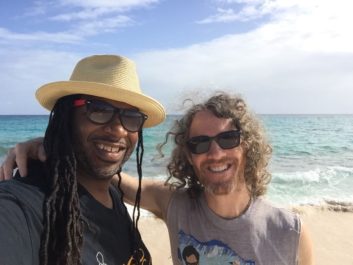
Scratch-a, scratch-a, scratch-a…Rewind! Mr. Sheth is Brian Sheth, who with his wife, Adria, founded the Sheth Sangreal Foundation. Mr. Watson is Joe Watson, who advised the foundation and would later introduce James to James McKinney and Scott Jacoby of Eusonia Enterprises and Eusonia Records out of D.C, and New York, who would become the technical advisers and ultimately project managers of James’ vision. But five years ago, James was still a home-studio owner and a gigging drummer who had struck a friendship with Sheth while playing in one of the Private Villas and told him of his idea, one that would one day benefit all the youth of the Caribbean, with Anguilla as a hub.
James had done his homework, researching other schools and liking the hands-on approach of The Blackbird Academy in Nashville. Things started to move quickly after that; well, quickly for island time. About six months after meeting with James, Watson approached McKinney and Jacoby, whom he had known through advising Eusonia as a company, about helping out on the Recording Center portion of the Academy. McKinney and Jacoby flew down to meet with James, not fully knowing what might be expected from “technical advisors.”
The Grammy Connection

“I had never even heard of Anguilla when I first met with Joe,” McKinney admits with a laugh. “And when we flew down there, the Academy was just an idea. It was explained to us that we would be technical advisors, to help Darius fully form his ideas. But it’s hard for me and Scott not to dive in on everything that we do. So we ended up working with architects, managed construction, finances, and bringing our producer, engineer expertise right down to the equipment choices. We also brought our relationships, because our goal has been to really get the most bang for the buck as far as doing something really important for the region and for the youth of the region.”
“I think that James and I each have skills which we share and some that we don’t,” Jacoby adds, speaking to their now ten-year partnership. “For example, James is really good at accounting; me, not so much. I have a lot of experience with gear and studios and acoustics. And then we have overlapping abilities and interests that complement each other.”
The other key relationship that McKinney and Jacoby brought was with the Grammy organization. Each had served as members of regional and national boards; each had served as co-chairs of the Producers & Engineers Wing of the Recording Academy, at separate times. It so happened that Sheth, founder of the Sheth Sangreal Foundation, also had an established relationship with and served on the Board for the Grammy Museum Foundation. More synergies, as McKinney says.
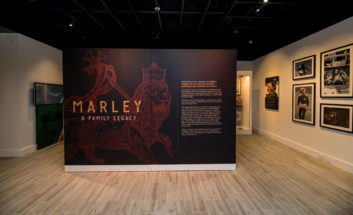
Today, there is a Grammy Museum Gallery as part of the Anguilla Music Academy, the first outside the U.S. And the impetus for the school itself, the first summer camp programs, were based on, and supported by, the Grammy Museum’s Music Revolution Project, a program that run throughout the States in the summer.
“What I think the Grammy connection does for the young people is give them some kind of hope, to say, “Okay, you can be from Anguilla and you can still win a Grammy Award,” James says. “You can still be associated or affiliated with such a prestigious brand. So, again, that kind of connection is exactly what we were looking for. And that’s the role that the Music Academy is trying to play. We call it the gap between the Caribbean and Hollywood.”
That first summer camp, called the Music Revolution Project, was essentially a proof of concept leading up to the full-blown Academy. At the time, 2015, they were operating out of a rented space where James had moved his studio, with anywhere between 25 to 40 students. McKinney and Jacoby and Grammy Museum staff would come down to teach and mentor, bringing their families with them and prompting the first cultural exchanges, which would become a part of the overall Academy mission.
The Studios
For the next three years, the camps continued, the idea grew in scale, the concept was proven, and then another generous grant was committed by the Sheth Sangreal Foundation. The studios could proceed. Early on in the process, Jacoby and McKinney had proposed the idea of bringing in a professional studio designer to make the Recording Center world-class, setting up a Skype call with Wes Lachot and bringing together even more collective synergies.
It turns out that eight years earlier, when James first settled down in Anguilla and started to ponder his future, he set up a Vision Board above his desk. Among the collection was a photo of a Grammy Award and a photo of a professional studio he found on the Internet. He looked up the designer, Wes Lachot, and simply called him on a Sunday afternoon. They ended up talking for hours.
“I didn’t know who he was, but I talked to him because, well, because he’s a really great guy,” Lachot recalls. “We ended up talking for half the afternoon about his vision for the studio. He clearly didn’t have hardly any money himself, but he kept talking about some funding that he was going to be getting. Then when I got on the call many years later with James and Scott, I said, Wait! I know this guy! We talked years ago! That was a real small-world moment. And Darius’ original vision was amazingly spot-on.”
One of the biggest decisions hammered out over the course of a few years was whether or not to go with a solid analog base. It would be more expensive, but all were adamant that putting in an API Legacy AXS console, with a stacked outboard rack at the producer’s desk, was the right call for a facility that wanted to both teach students the art and science of recording and attract engineers from around the world. API, McKinney says, was very generous in its support, as was ATC in making the SCM200 monitoring in Ocean Studio A affordable.
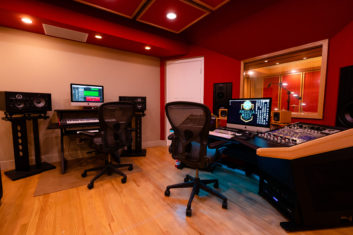
The two control rooms (Sunset Studio B has an API The Box and Guzauski-Swist monitors) needed to be big in order to accommodate students, but not too big that it would interfere with a proper reflection free zone, balancing between sweet spot and wider sweet spot. It was also important to have substantial live rooms; the musical culture of the island is all about playing together, musicians feeding off of each other. Lachot’s solution was to implement variable acoustics.
“I think it’s important for the room because these days the state of the art is to be able to change the room around quickly, not have it be set a certain way,” Lachot explains. You need to be able to change the reverb time in a room—not drastically, but a reasonable amount of change. For drums, people like pretty loud sounds these days, and you want to let the sound bloom. You want to reveal. But there are days when you want to be dead for vocal recording. You can change a couple of the walls completely from absorptive to diffusive. And on different types of instruments, I think it’s a real learning, learning tool.
“You can simply change the wall, and they can take care of a problem without having to tell musicians to move,” he continues. “Sometimes they might be in a circle or a certain distance apart because this is how they set up on stage. You don’t want to mess with that if you don’t have to.”
More to Come
There’s so much more to this story, including cooperation and support from the government, community outreach and involvement, and ongoing plans to bring in coding and other technology-based coursework to provide even more opportunity. The music and the players and the youth are there, and they are hungry for knowledge. McKinney, Jacoby, Lachot and James are all excited to provide it for many years to come.
“One of the things we talk to students about in the camps is what it means to have a career in music,” Jacoby says. “James and I broke down all of the various careers and the opportunities that sort of stem out from an interest in music. You could be in the publishing industry, , the songs industry. You can be a mixer. You could be a person who just makes beats. You could be a person who designs sounds. And the kids were super wide-eyed. We show them 30 different possible career paths where they thought there were only one or two. That’s a big part of the mission to educate them on opportunity.
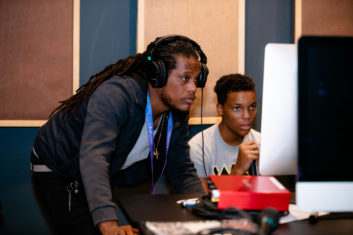
“I was always hoping for some sort of way to combine a number of the most prominent interests in my life, which include music, include other cultures and include philanthropy of a sort that helps others,” he continues. “I remember mentioning to my wife when I first met Darius—I was like, ‘Honey, I think this guy is going to end up being a friend for life, and a brother.”
McKinney echoed the exact same sentiments, calling James the brother he never knew he had, and the entire experience a commitment by he and his family for life.
For Darius James? “I was given a chance to make a difference, with the help of a lot of people,” he says. “They gave me an opportunity which inspired me to inspire others. And I hope that my life will inspire others, as well. And I want to give somebody else, all my students, that chance.”






